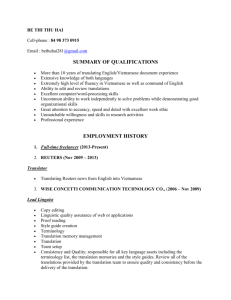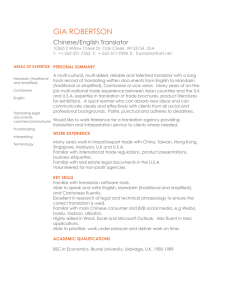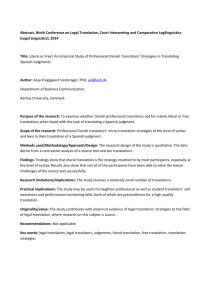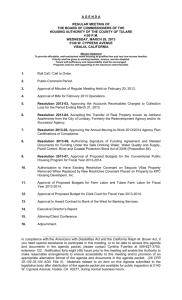Translation for singers: Towards a singable and comprehensible
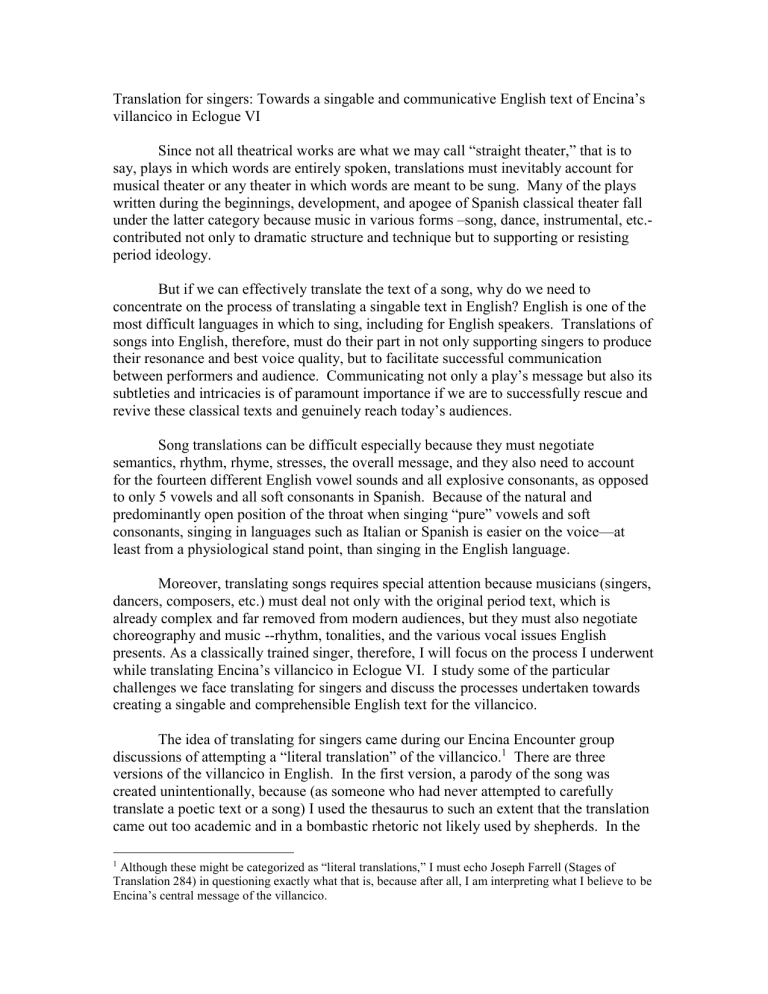
Translation for singers: Towards a singable and communicative English text of Encina’s villancico in Eclogue VI
Since not all theatrical works are what we may call “straight theater,” that is to say, plays in which words are entirely spoken, translations must inevitably account for musical theater or any theater in which words are meant to be sung. Many of the plays written during the beginnings, development, and apogee of Spanish classical theater fall under the latter category because music in various forms –song, dance, instrumental, etc.contributed not only to dramatic structure and technique but to supporting or resisting period ideology.
But if we can effectively translate the text of a song, why do we need to concentrate on the process of translating a singable text in English? English is one of the most difficult languages in which to sing, including for English speakers. Translations of songs into English, therefore, must do their part in not only supporting singers to produce their resonance and best voice quality, but to facilitate successful communication between performers and audience. Communicating not only a play’s message but also its subtleties and intricacies is of paramount importance if we are to successfully rescue and revive these classical texts and genuinely reach today’s audiences.
Song translations can be difficult especially because they must negotiate semantics, rhythm, rhyme, stresses, the overall message, and they also need to account for the fourteen different English vowel sounds and all explosive consonants, as opposed to only 5 vowels and all soft consonants in Spanish. Because of the natural and predominantly open position of the throat when singing “pure” vowels and soft consonants, singing in languages such as Italian or Spanish is easier on the voice—at least from a physiological stand point, than singing in the English language.
Moreover, translating songs requires special attention because musicians (singers, dancers, composers, etc.) must deal not only with the original period text, which is already complex and far removed from modern audiences, but they must also negotiate choreography and music --rhythm, tonalities, and the various vocal issues English presents. As a classically trained singer, therefore, I will focus on the process I underwent while translating Encina’s villancico in Eclogue VI. I study some of the particular challenges we face translating for singers and discuss the processes undertaken towards creating a singable and comprehensible English text for the villancico.
The idea of translating for singers came during our Encina Encounter group discussions of attempting a “literal translation” of the villancico.
1
There are three versions of the villancico in English. In the first version, a parody of the song was created unintentionally, because (as someone who had never attempted to carefully translate a poetic text or a song) I used the thesaurus to such an extent that the translation came out too academic and in a bombastic rhetoric not likely used by shepherds. In the
1 Although these might be categorized as “literal translations,” I must echo Joseph Farrell (Stages of
Translation 284) in questioning exactly what that is, because after all, I am interpreting what I believe to be
Encina’s central message of the villancico.
second, I purposely went to the other extreme. I put away the thesaurus and translated the song in a more rustic lexicon. For the first two versions I attempted to apply the strategy of “Channeling” (Jonas) and took into account the exact syllable count in Spanish and matched it to English so that the text would fit the original music. For the third version
(which I have not completed yet), my aim is to concentrate on the stresses in English words and to select the best “singable” text, that is, choosing words which facilitate sound production and diction. While remaining as faithful as possible to the spirit of the original text, where ever necessary, I give priority to stresses and to the best vowel sounds and consonants over exact word or phrase literal translation.
Finally, in the third version, I approach translation using Donald Bahr’s method for translating songs. Although Bahr’s method is complex and specifically aimed at translating native American songs into English, the beginning portion of this theory may prove beneficial for translating songs in Spanish into English or vice versa. Instead of approaching the original language in a word by word literal translation sequence, Bahr suggests taking the original text and writing a “native ordinary” version, in other words, to put the message of the original language in its simplest and straight forward terms.
The next step is to translate this “native ordinary text” into an “English ordinary text,” from where the literal English translation is derived.
It would be interesting to work with a group to see which translation would work better in a given setting.
Bahr, Donald. “A Formant and Method for Translating Songs.”
Journal of American
Folklore 96 no. 380 (1983): 172-182.
La Bouff, Kathryn.
Singing and Communicating in English. A Singer’s Guide to English
Diction . Oxford UP, 2008.
Johnston, David, Ed. Stages of Translation . Bath: Absolute Classics, 1996.
Jonas, Susan. “Aiming the Canon at Now: Strategies for Adaptation. ?
